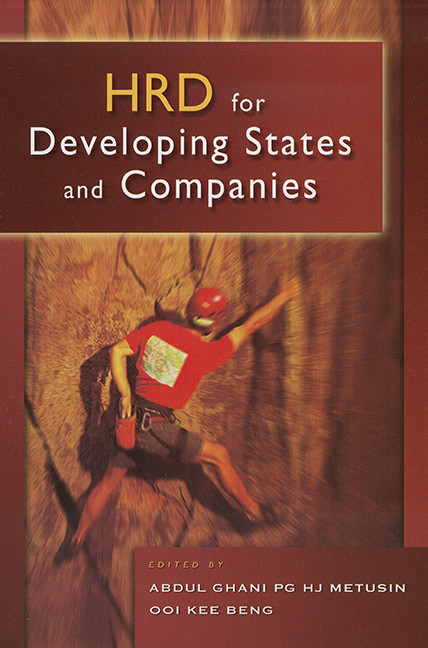Book contents
- Frontmatter
- Contents
- Foreword
- Preface
- Editorial Remarks
- Acknowledgements
- Introduction
- HRD for Statesmen
- HRD Strategies for Companies
- Competence Development
- 13 Creating Sustainable Competitive Advantage Through People and Culture
- 14 Maximizing Workforce Efficiencies with Effective Change Management
- 15 The Rise of the High Performance Learning Organization
- 16 Performance Measurement and Management
- 17 Strategies to Help People Learn and Perform
- 18 Maximizing Talent for Maximizing Result
- 19 How Investing in Human Capital can Translate Positively into the Organization'sPerformance — The Role of Benchmarking
- Corporate Experiences
- About the Authors
18 - Maximizing Talent for Maximizing Result
from Competence Development
Published online by Cambridge University Press: 21 October 2015
- Frontmatter
- Contents
- Foreword
- Preface
- Editorial Remarks
- Acknowledgements
- Introduction
- HRD for Statesmen
- HRD Strategies for Companies
- Competence Development
- 13 Creating Sustainable Competitive Advantage Through People and Culture
- 14 Maximizing Workforce Efficiencies with Effective Change Management
- 15 The Rise of the High Performance Learning Organization
- 16 Performance Measurement and Management
- 17 Strategies to Help People Learn and Perform
- 18 Maximizing Talent for Maximizing Result
- 19 How Investing in Human Capital can Translate Positively into the Organization'sPerformance — The Role of Benchmarking
- Corporate Experiences
- About the Authors
Summary
TALENT MANAGEMENT OVERVIEW
People are the foundation for any organizational success. Individual innovations always provide the assured source of long-term success and competitiveness. Therefore, Talent Management is beneficial to both the organization and the employees. The organization benefits from (1) increased productivity and capability; (2) a better linkage between individual effort and business goals; (3) the commitment of valued employees; (4) reduced turnover; (5) increased bench strength and a better fit between people'sjobs and skills. At the same time, employees tend to benefit from: (1) higher motivation and commitment; (2) career development; (3) increased knowledge about, and contribution to company goals; (4) sustained motivation and job satisfaction. For these consequences to be realized, the right people must be hired, trained, mentored and retained.
Also, today priorities have changed. Although profit is the ultimate goal of the organization, a series of paradigm shifts has been discerned, going from profit-centric organization to customer-centric models and now to employee-focused ones. Now when the employee is in the limelight, one of the major concerns of organizations is to attract, develop, motivate and retain high-potential staff. It is now recognized that such employees constitute the vital component in organization'sformula for success, both in the short- and long-term perspectives.
Effective deployment and redeployment of employees is an emerging area of specialization within HR that requires solid workforce planning, analysis and skills/aptitude/interest tracking. It is essential that organizations develop the capacity to analyze their workforce and redeploy staff effectively. The typical company'sgrowing requirements for workforce flexibility and its need to develop employee skills through developmental assignments means that people change jobs and careers inside organizations as frequently as they do between organizations.
- Type
- Chapter
- Information
- HRD for Developing States & Companies , pp. 130 - 137Publisher: ISEAS–Yusof Ishak InstitutePrint publication year: 2005

